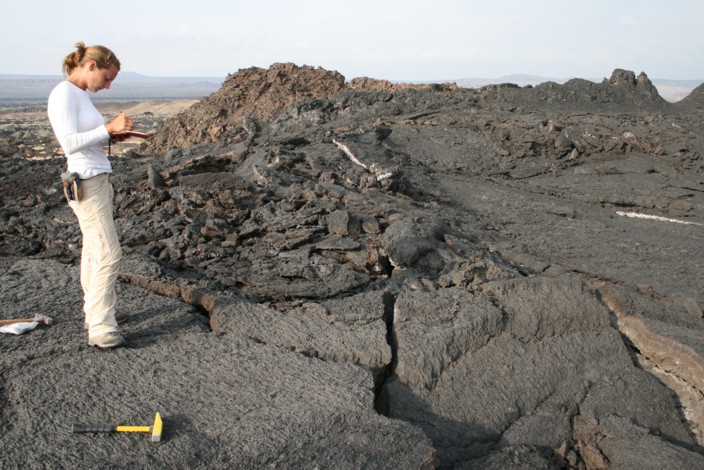
Charlotte Vye (BGS) taking notes on a recent lava flow. Photograph by David Pyle, University of Oxford.
Experimental Programme Working Group B:
What the composition of the magma is and how it evolves
Field, petrological and geochemical analyses of the Dabbahu Volcano: Conditions are too extreme for normal field mapping and so representative rock samples from key locations will be collected. These will be analysised to determine how the chemistry of the magmas varies at different locations and how it has changed over time. This in turn gives information about the depth of the magma chambers within the crust.
The amount of gases present in the magma affects how vigourous an eruption is and therefore how hazardous it is. When a volcano erupts, most of the gases within the magma are lost. However, small amounts of gas can be trapped within crystals and these crystals can be analysised to find out the pre-eruption levels of gases in the magma.
Advance remote sensing techniques: Satellite and airborne remote sensing techniques will be used together with field and laboratory research to compare the detailed findings in the Dabbahu area with those of the rest of the region. Remote sensing involves collecting images of an area across all wavelengths, not just the visible, but also near and shortwave infra red. Different rock types have different reflectance, that is they reflect different amounts of light or infra red energy. Reflectance is measured by spectrometers and is used to create geological maps of the region.
